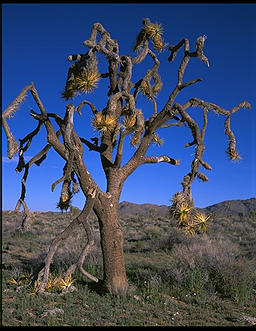 View Camera
Technique by Leslie Stroebel 1999 Focal Press. ISBN 0240803450. You can
order this book from
amazon.com
View Camera
Technique by Leslie Stroebel 1999 Focal Press. ISBN 0240803450. You can
order this book from
amazon.comby Philip Greenspun; created 1996
Site Home : Photography : View Camera Technique
 View Camera
Technique by Leslie Stroebel 1999 Focal Press. ISBN 0240803450. You can
order this book from
amazon.com
View Camera
Technique by Leslie Stroebel 1999 Focal Press. ISBN 0240803450. You can
order this book from
amazon.com
Les Stroebel is chairman of the Department of Photographic Technology at the Rochester Institute of Technology and one of the authors of "the big textbook". I've never met the guy, but I'm thinking that he must be pretty old because this book has been through six editions.
This is a very good book. If it were your only source for photographic information then you'd still be able to take great pictures. Everything is in here with examples semi-specific to view cameras. For example, there are sections on film types and exposure curves somewhat similar to what you'd find in a serious general photography textbook.
View cameras are especially well served of course. All of the view camera movements are explained with line drawings and photographic examples. Since it just goes on and on for hundreds of pages, I think you'd have a hard time absorbing it all unless you supplemented the book with some hands-on experience and Polaroids.
The final treat of the book is a comprehensive buyer's guide to cameras and lenses. You will never find this information in any other convenient form. There is no salesman at any camera store who has really used more than a handful of the 100 or so view cameras on the market. Stroebel includes about 80 specs on each camera, e.g., how many degrees of back tilt are available. If you've come from the 35mm camera world, you might find this surprising. After all, wouldn't the book quickly become out of date? Well, as it turns out the pace of innovation in view camera design is rather slower than in 35mm SLRs or point and shoots.
I liken view camera photography to software development. The tools are almost exactly the same as they were decades ago. The difference is that view camera photographers know that they are using the same tools as their fathers. Programmers at Microsoft use C and generate the same sorts of bugs in the same sorts of ways as their forebears in the 1950s; view camera photographers struggle with the same issues of composition and perspective control in the same way as their forebears in the 1880s.
So it is your choice: splurge on a new edition of this book or dig up an old one in the library. You can't really do much with a view camera until you've absorbed the information in this book.
At right, a picture I took with my Linhof Master Technika camera in Joshua Tree National Park.